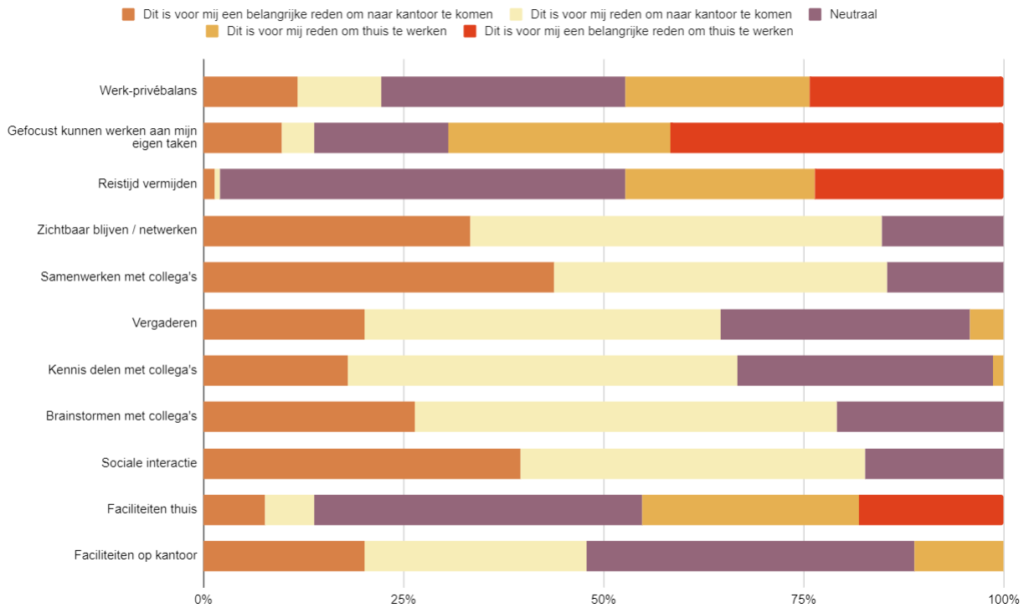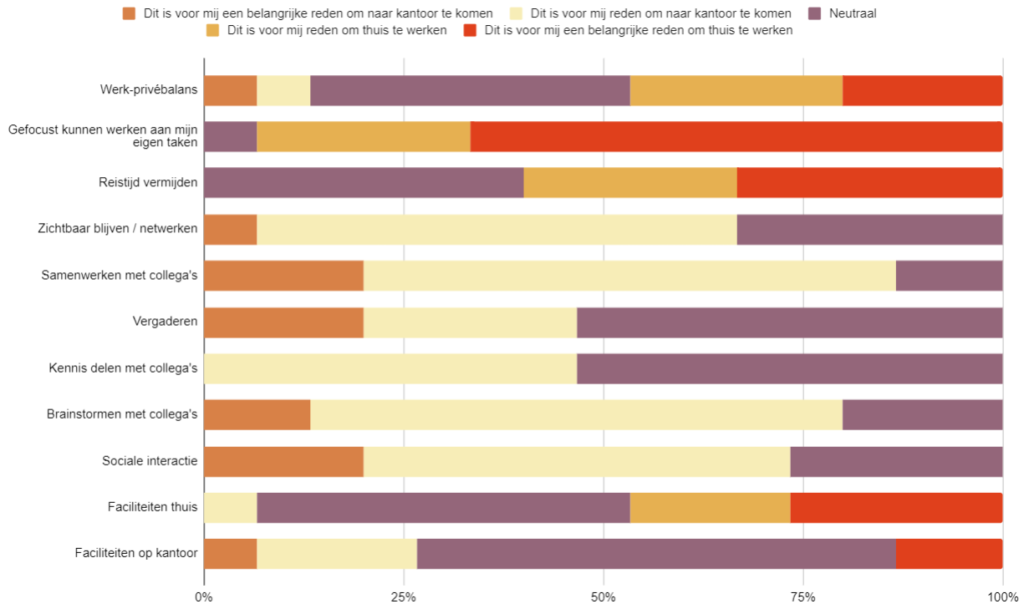New devices and technologies are only one side of the hybrid working coin: it’s about an integrated approach to bricks, bytes and behavior. A new way of working (together) and corresponding facility support. With a data-driven approach, you avoid unnecessary remodeling and redesign costs and save in space and travel expenses.
What will be the new normal of (collaborative) work? Do we leave it open or do we prescribe policies that everyone must adhere to? And then what should the policy be? How do we as an organization stay effectively collaborative and connected with each other? These are all questions that you really need to answer before you start working on housing policies and redesigning your office.
Utility and need for a data-driven approach
Remodeling and furnishing an office is a costly endeavor. And how do you set up your office if you don’t know who is coming to the office to do what and when? Using data will help you avoid missing the mark and ensure a well-supported housing plan.
There are several useful sources for data:
- Using a survey, ask for input from the best consultants out there: your own employees.
- Other sources such as Outlook, Gmail, Slack, and/or sensors provide useful insights into work relationships and employees’ current hybrid work behaviors.
Data-driven insights
With our data-driven approach, you’ll get a handle on four, interrelated topics: personal preferences, time allocation and spaces, work relationships and personal motivations.
Personal preferences
In the ideal world, the hybrid working environment fits the needs and wants of employees perfectly. Therefore, an important first step is to understand these wants and needs. After all, every person is different, so is the desired balance between working from home and the office, flexibility and part-time work. In doing so, of course, we do not want to lose sight of the connection with each other and with the goals of the organization.
Using our data-driven approach, we balance employees’ personal preferences with the organization’s attendance and staffing policies. This is how you maintain a connection to each other and to the goals of the organization.
Time and spaces
An important question for office design is: Where do my employees spend their time in the office and what do they need then?
Figure 1 is an example of the average time spent in the office per day. Understanding this time use, combined with space preferences, provides very concrete input for (re)design of the office.

Working relationships
Many organizations report finding it difficult to stay connected. Working from home has benefits, but how do you maintain the connection between colleagues and the organization? Understanding working relationships (e.g., collaborating and problem-solving, brainstorming or deliberating) allows colleagues to come together in the office in a “smart” way. And that on those days when it is convenient for them too.
The partnerships or informal networks within the organization also say something about the appropriateness of certain housing policy choices. For example, for some organizations, relatively many employees are just as likely to engage with colleagues from home, than together in the office, without losing the sense of connection. In that case, setting up an office as a “meeting place” for employees may not be the best choice. Another example is collaboration within and between teams. For organizations or departments where there is a relatively high degree of multidisciplinary collaboration, it may not make sense at all to agree on a fixed day in the office with a team or make other arrangements at the team level.
Understanding work relationships also allows for planning: Who is best to come to the office when and for what? And then what is needed, in terms of facility support?
Who is best to come to the office when and for what?
Personal motivations
If you, as an organization, want to actively try to (positively) influence hybrid work behavior, it is useful to know why employees like to come to the office or work from home. Comparing Figures 2 and 3, at first glance we may not see major differences. However, there are some interesting findings:
- The group of employees who like to work from home 3 days or more are proportionately more likely to say that an important reason for working from home is to be able to work focused on their own tasks.
- In addition, they are more often neutral about meeting and sharing knowledge with colleagues. So for this group, these activities are not an important reason to come to the office.
- They are also more likely to be neutral about office facilities.


Thus, providing good opportunities for focused work on one’s own tasks in the office seems like a good start to bringing this group of employees into the office a little more often, if desired.
Driving behavior gets much more out of your investments in housing and IT.
Other insights
The data collected provide a wealth of information for additional analysis. Consider, for example, potential savings in space and travel costs. Or to the relationship between satisfaction with the current hybrid work environment and employees’ personal preferences and motivations. That way you know what makes your employees happy.
Want to know more?
Want to learn more about what insights about hybrid working our data-driven approach can offer you? If so, please contact us at info@qultify.com. We are happy to think with you about your unique issue.













